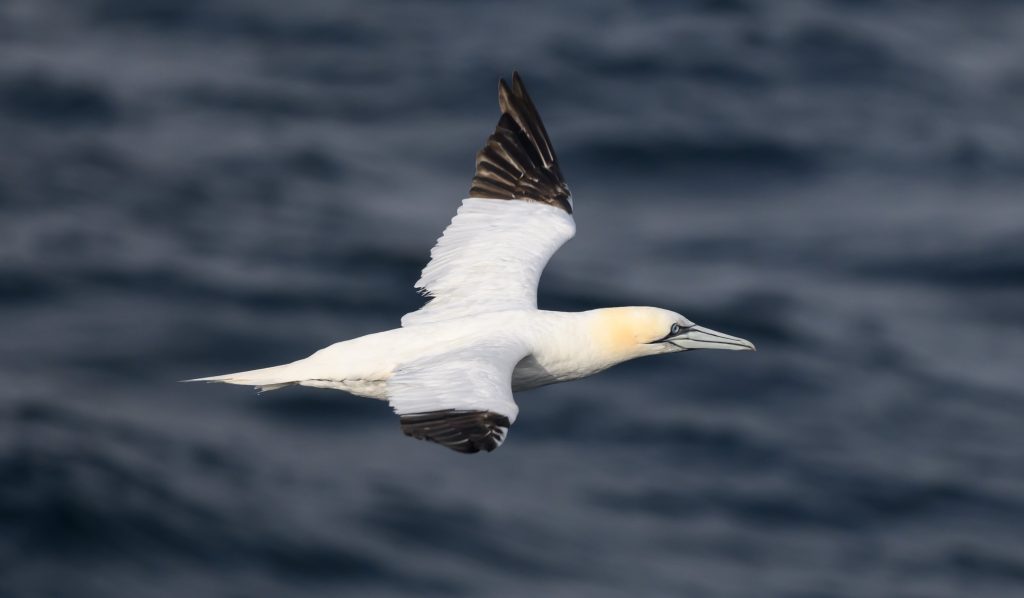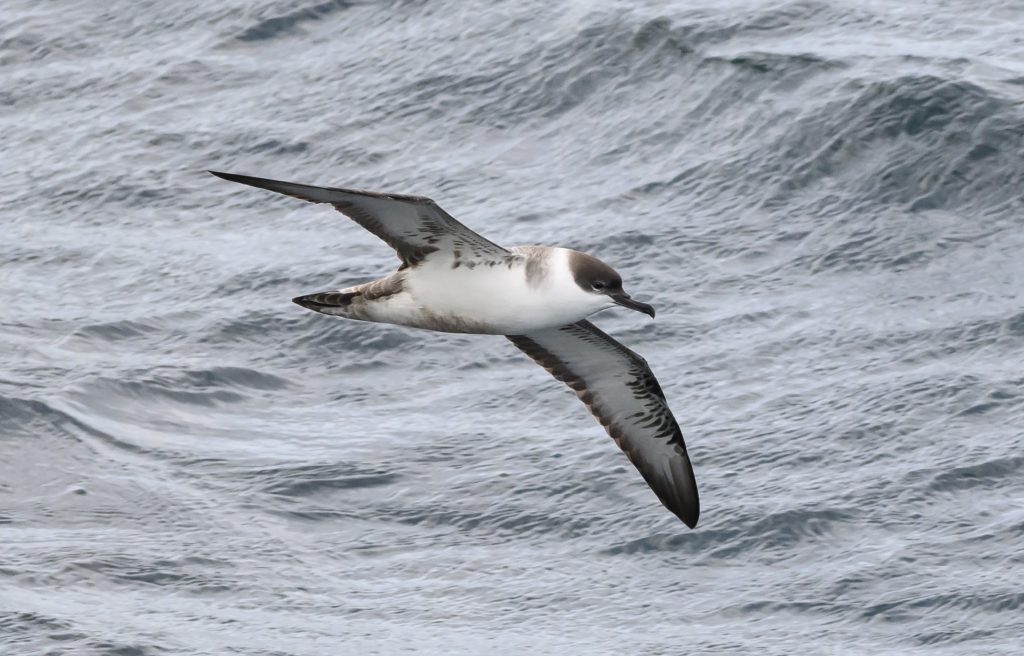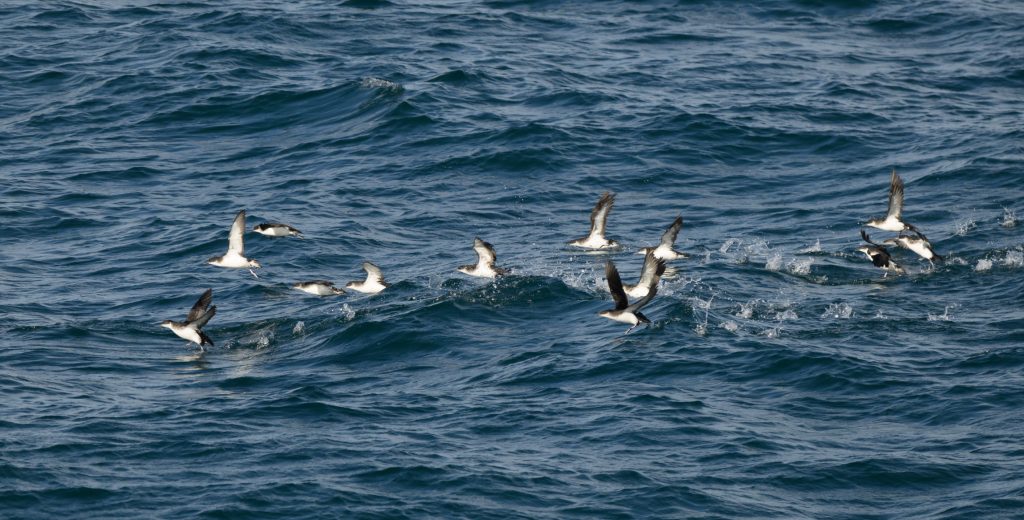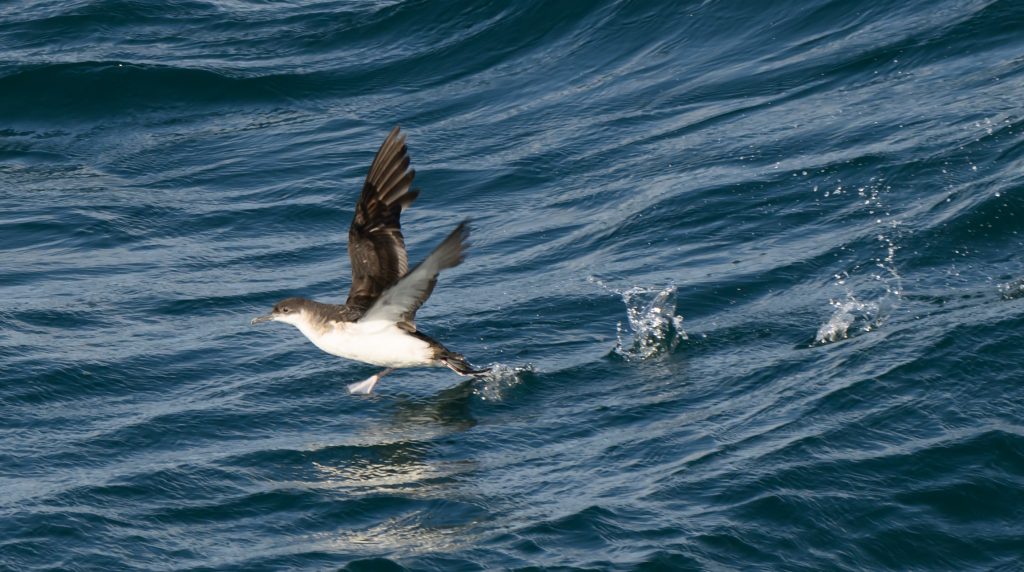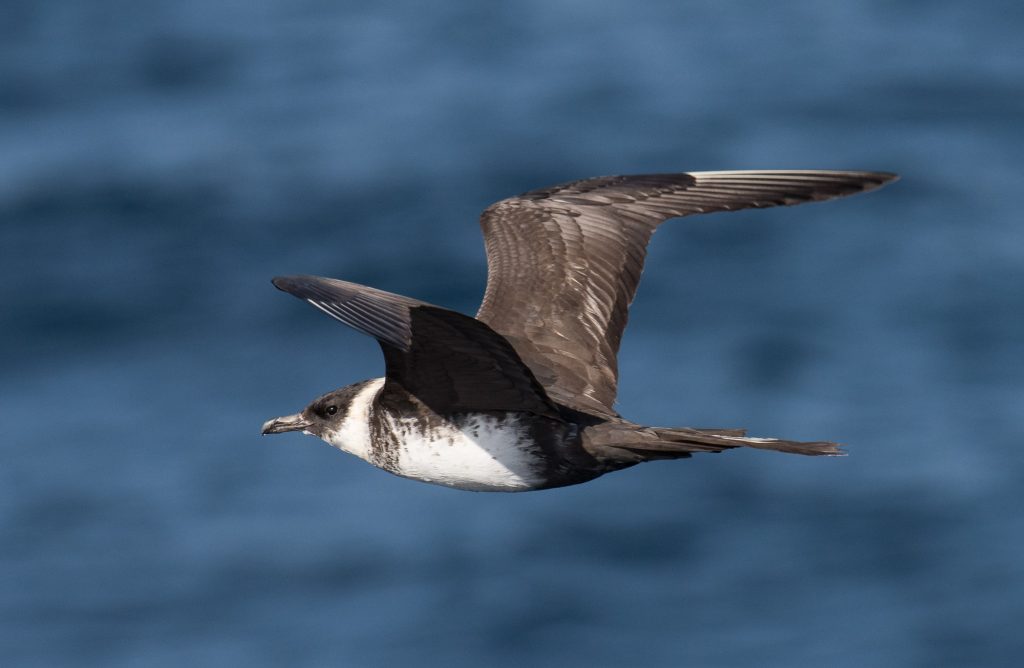 Peltic 2024: 19-20 October
Peltic 2024: 19-20 October
20 October 2024
19th
After a chilled day in Falmouth, it was back out to sea and normal service was resumed i.e. running new transects rather than rerunning ones we’ve already done. We started the day offshore and headed north up a transect which finished just to the east of the Lizard. Our transit took us across Falmouth Bay to pick up the next transect running south.
It was a glorious morning, blue skies, blue seas and light(ish) winds and with the sun behind us a great day for surveying. Except we didn’t start surveying straight away, there were fish near the start of the transect so we started with a trawl.
Trawl out of the way we set off north and it didn’t take too long to run into birds. We came across a flock of around 200 birds, consisting mainly of Great Black-backed Gulls, Gannets, and Great Shearwaters, sat on the water. They were most likely there because they had gathered around a fishing boat hauling its nets and then stayed put once the boat moved on. Photos of the species involved from earlier this Peltic; it was a little too hectic counting to take photos (photos 1-3).
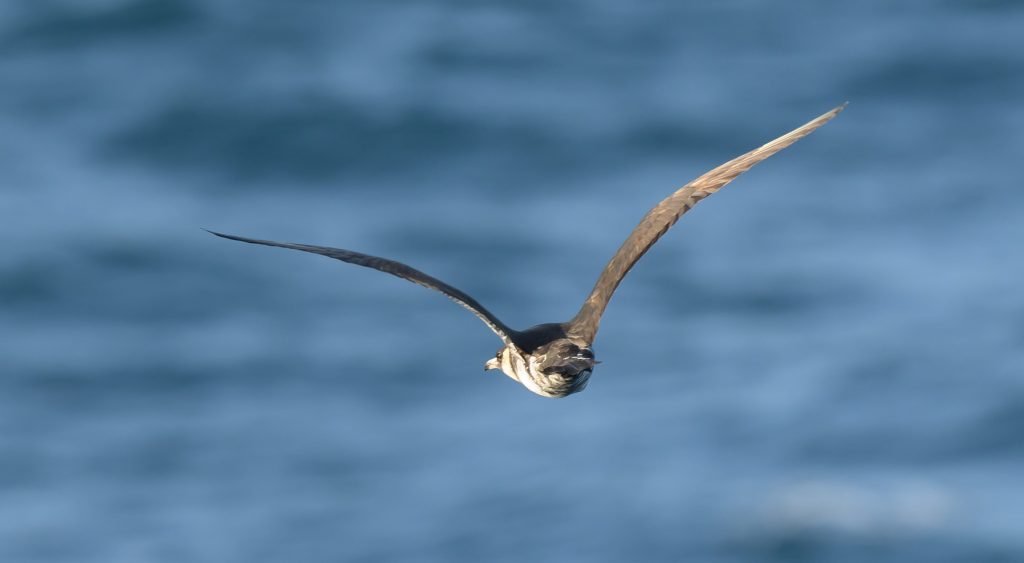
Bird of the morning was a first winter Pomarine Skua that hurtled down the port side, so quick I only got a rear-end photo as it disappeared (photo 4).
Some splashing off to starboard had me thinking tuna but on closer examination turned out to be six Harbour Porpoise putting in some effort to get away from the Endeavour. It was great to log a few more of these diminutive cetaceans as we’ve not had much luck seeing them so far. To remind you what they look like here’s a photo from elsewhere, we never get them close enough on Peltic to get any shots (photo 5).
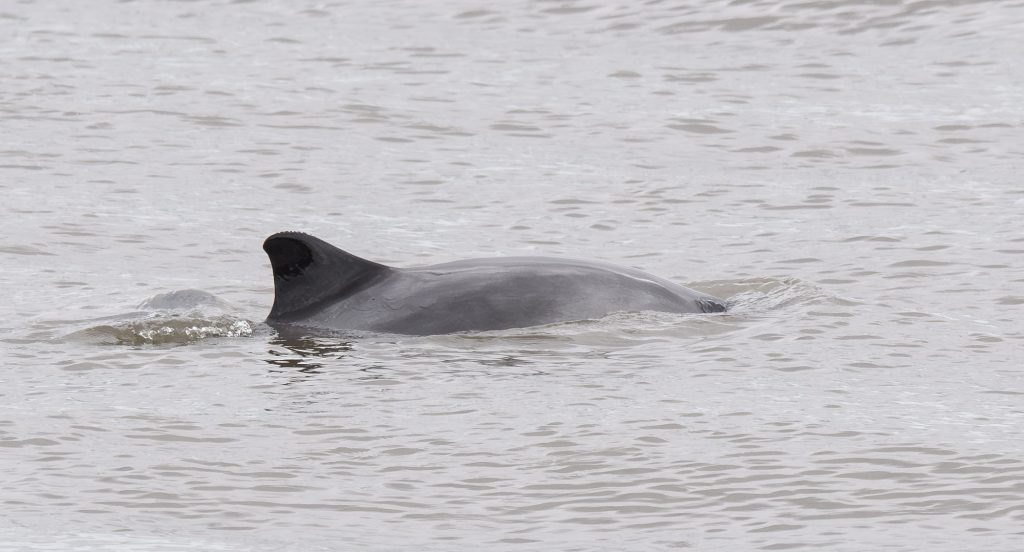
We did have a couple of sightings of tuna as well as one group of Common Dolphins, which ignored us completely and swam past.
On the transit across Falmouth Bay, we flushed a flock of Manx Shearwaters (photos 6 & 7), which flew off and joined a flock further away where there may have been a few Balearic Shearwaters – but they were too far away to be really certain.
It was still sunny, so turning on to the next transect we had the dreaded glare, fortunately we were spared looking at it for too long as we broke off for another trawl. Restarting a little less than two hours later we recorded a Balearic Shearwater on transect and started seeing decent numbers of Kittiwake (photo 8). We’ve seen very few so far (think tens compared to hundreds last year) so it was getting a bit concerning. The numbers we logged didn’t completely redress the balance but certainly helped.

We had five encounters with small groups of Common Dolphins and five with leaping tuna. Despite the number of the latter being seen off the coast of the UK this summer we have so far recorded very few.
The forecast for tomorrow is not great, Storm Ashley is threatening to bring a spell of strong winds to the Channel, although nothing compared to what Scotland and Ireland will get, and the plan is to start off the coast of France in the morning.
20th
The forecast was right, 30-35 knots of wind from the SW and rain, fortunately the transect we were running was just off the wind enough that the central windscreens stayed free of rain. Visibility was poor in the rain though; we were only a few kilometres off the French coast but could barely see it.
The day got off to a good start, with a couple of Balearic Shearwaters passing by close to us (photo 9 – from a previous Peltic) and we ended up seeing six on the transect. Other than that, birds were a bit scarce, although our third Pomarine Skua was very nice to see. It looked like an adult, the twisted tail feathers still visible but the ‘spoon’ ends were missing, here’s a photo of one from a Peltic a few years ago which looked very similar (photo 10).
When we broke off transect for a trawl there were very few birds attracted to the ship as we hauled, although two Balearics were of note.
Birds were the only things in short supply, there were also no cetaceans and, unfortunately, the transect ended without a cetacean sighting, making it the fourth blank so far.
The weather brightened as we neared the end of the transect and as we began the northbound transect to join up with where we finished last night there was even some sunshine. The wind had dropped a little, although the swell remained significant.
Almost straight away we had Common Dolphins coming into the bow and ended with six encounters of 52 animals (photo 11).
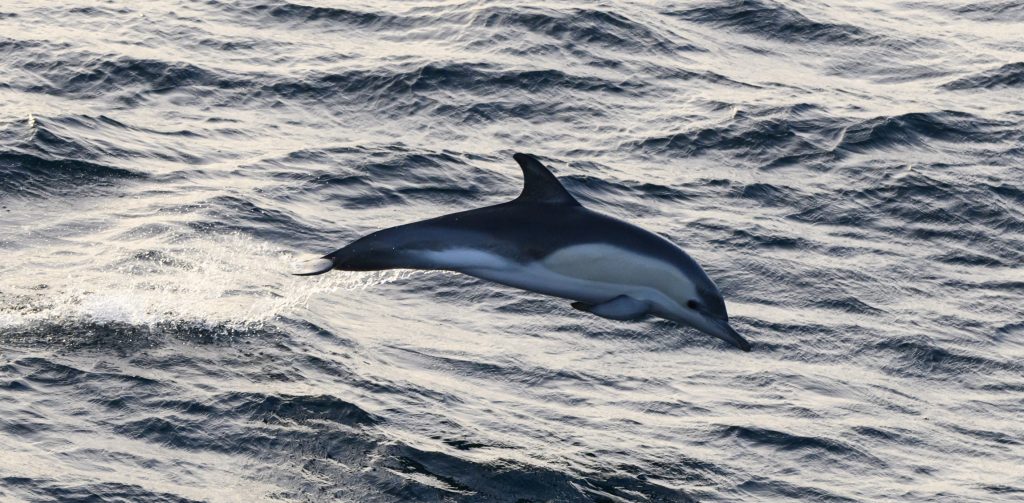
Birds remained scarce, however, with only 55 recorded in three hours of surveying, Gannets were the most numerous with 31 logged. There was only one large shearwater, a Cory’s, it’ll be interesting to see if they’ve actually moved out of the Channel now, although we saw plenty of Great Shearwaters further east last year.
Summary of sightings
Seabirds
Auk sp. 88
Balearic Shearwater 7
Cory’s Shearwater 2
Gannet 289
Great Black-backed Gull 86
Great Shearwater 82
Great Skua 5
Guillemot 33
Herring Gull 8
Kittiwake 171
Larus sp. 18
Lesser Black-backed Gull 5
Manx Shearwater 69
Meadow Pipit 1
Puffin 11
Razorbill 45
Skua sp. 1
Sooty Shearwater 4
Storm Petrel 2
Pomarine Skua 2
Cormorant 1
Mediterranean Gull 3
Common Scoter 8
Marine Mammals
Common Dolphin 80
Harbour Porpoise 6
Tuna 16

